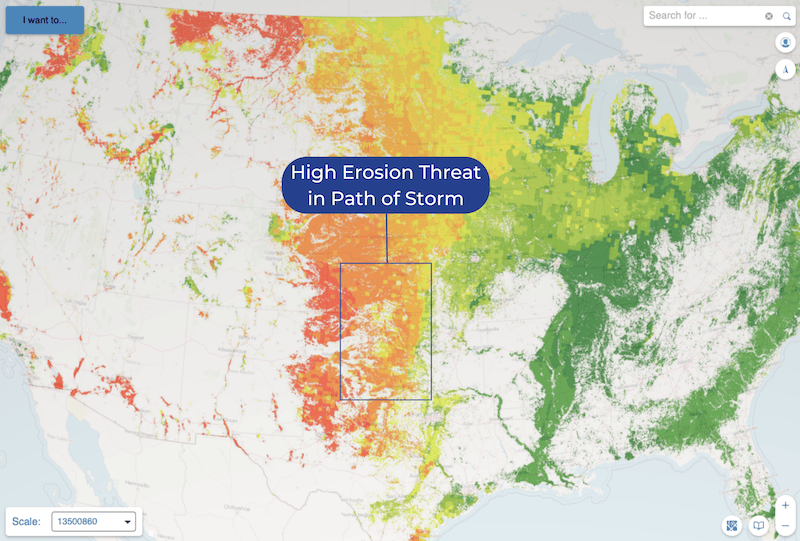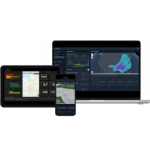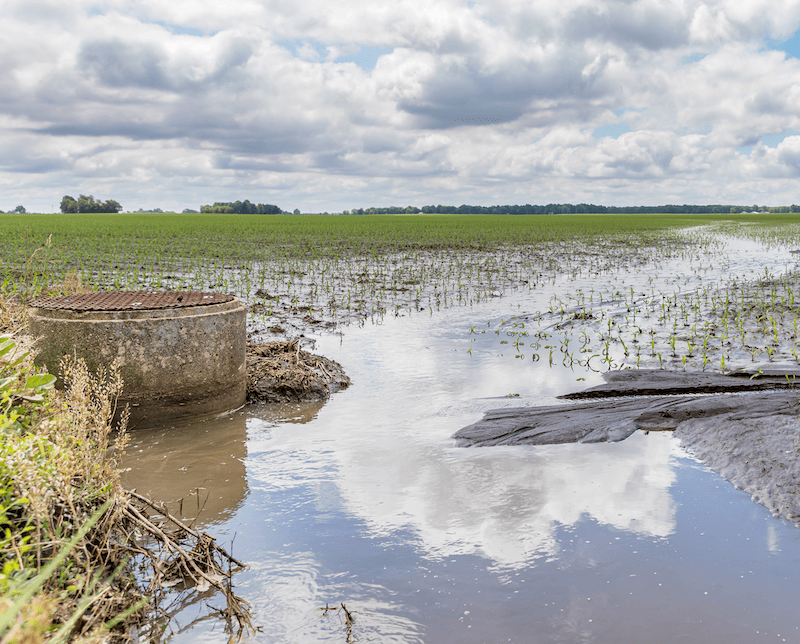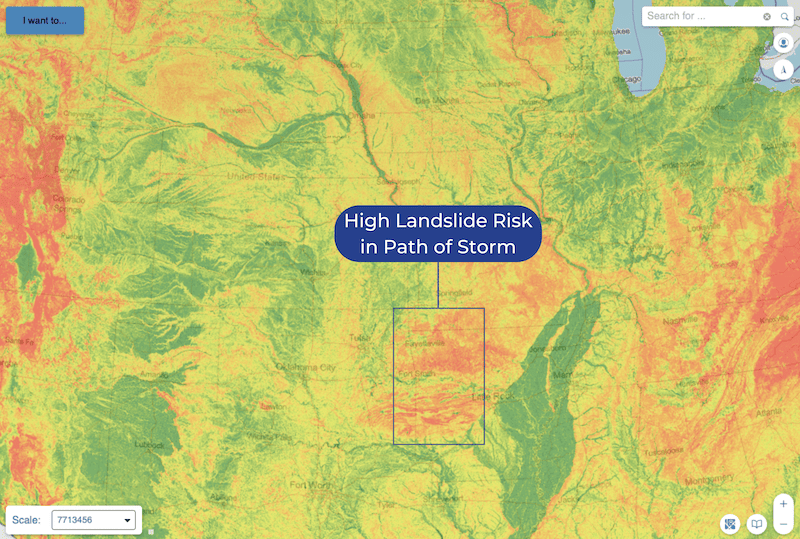The central United States is no stranger to severe weather events, but when combined with this year’s El Niño, the consequences can be particularly catastrophic. This week, the midwest is experiencing severe rainfall and we’re evaluating how high rainfall in an El Niño year can lead to erosion, flooding, landslides, and pose a significant risk to infrastructure.
Erosion: A Silent Threat
When intense rainfall strikes the central U.S. during an El Niño year, the region’s flat topography and extensive agricultural land make it highly susceptible to erosion. The soil, often saturated due to the excessive rain, loses its ability to absorb the water, resulting in surface runoff. This runoff carries away valuable topsoil, degrading the farmland, causing long-term damage to the environment and exposing underground assets. Additionally, erosion can contribute to sedimentation in rivers and streams, affecting water quality and increasing the risk of flooding downstream.

Flooding: Sudden & Flashy
El Niño can amplify rainfall patterns, leading to intense downpours and prolonged precipitation events in the midwest. The combination of heavy rain, saturated soils, and limited natural drainage systems sets the stage for devastating floods. Low-lying areas, river basins, and urban centers are particularly vulnerable. The floodwaters can inundate homes, destroy infrastructure, disrupt transportation networks, and pose threats to public safety. Flash floods, caused by sudden and intense rainfall, can occur with little warning, leaving residents and emergency responders with limited time to react.
Landslides: Nature’s Wrath Unleashed
In states like Oklahoma and Arkansas, where rolling hills and steep slopes are prevalent, heavy rainfall can saturate the soil, increasing its weight and reducing its stability. This heightened instability, combined with the force of gravity, can trigger landslides and slope failures. The consequences of landslides are significant, as they can cause pipeline ruptures, damage or destroy homes, block roads, and even result in loss of life.
Mitigating the Risks
Given the increased risks posed by heavy rain in an El Niño year, it is crucial for midwest asset owners and project developers to prioritize proactive measures to mitigate the impact of such weather events. Here are a two strategies that can help:
- Improved infrastructure planning: Proactively identify areas of high risk of flooding, landslides and erosion intersecting with your asset. Take mitigating measures for existing assets to identify problematic flow paths and failing water bars. Incorporate floodplain management techniques into infrastructure planning and design, such as constructing or reinforcing levees and stormwater drainage systems.
- Enhanced early warning systems: Invest in advanced monitoring technologies, weather forecasting, and communication systems to provide timely and accurate warnings. Be sure these technologies are tailored to your geography and weather conditions, to alert issues only when there is a true threat.
The combination of heavy rain and El Niño in the central U.S. can have severe consequences, leading to erosion, flooding, and landslides that impact or destroy infrastructure. Understanding these risks and taking proactive measures to mitigate them is crucial for safeguarding assets, lives, and the region’s long-term sustainability.
By investing in resilient infrastructure, implementing sustainable land management practices, and prioritizing early warning systems, the Midwest can better prepare itself for the challenges posed by heavy rainfall events in El Niño years.
Want more information?
To learn more about Teren’s near real-time weather monitoring or threat assessments, request a meeting today.




